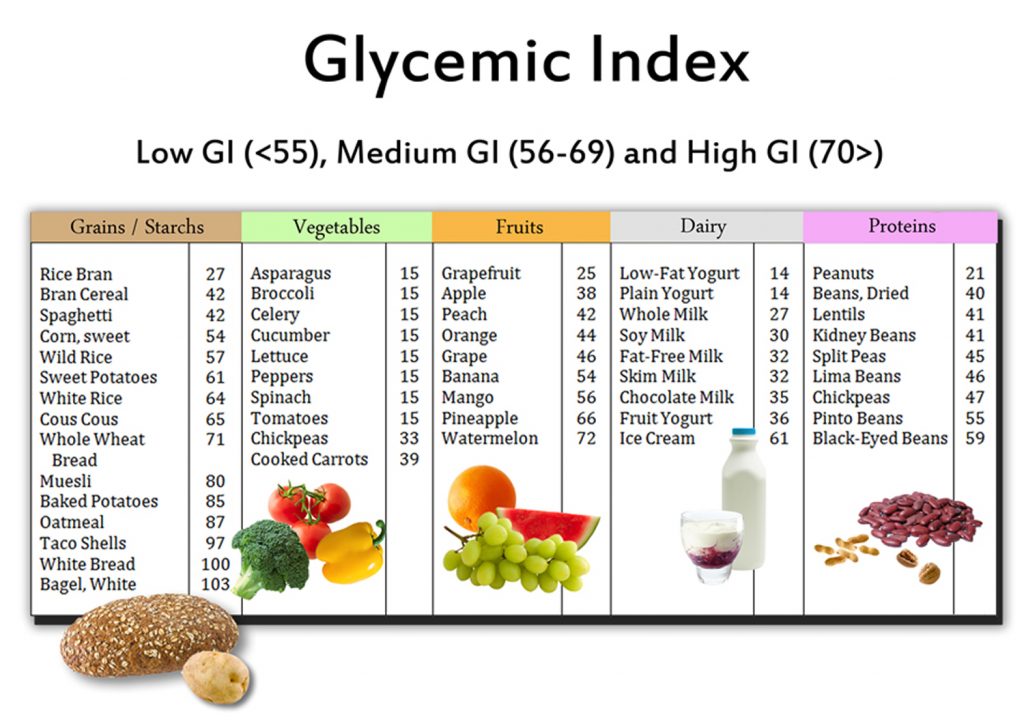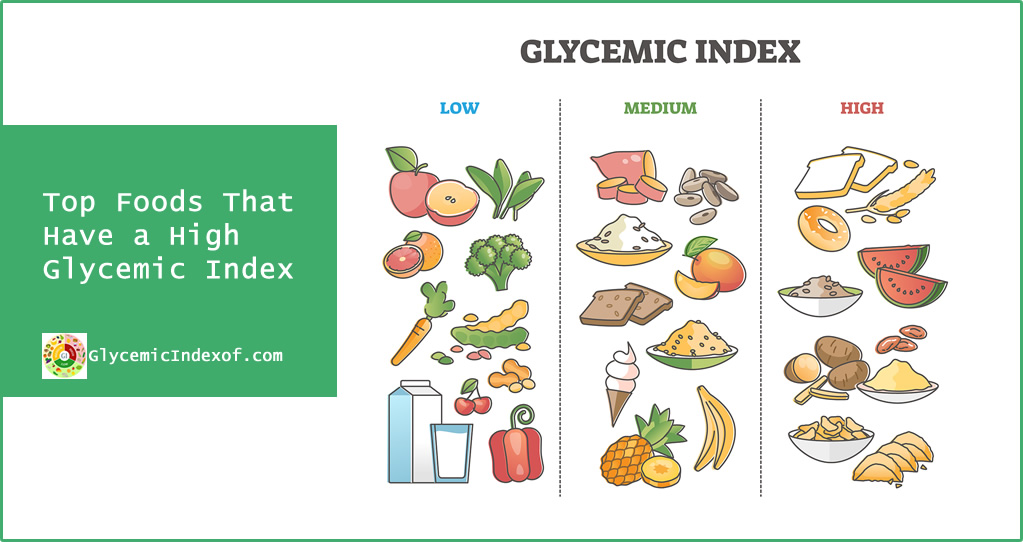How to Calculate Glycemic Index?
Glycemic index is a number assigned to different foods. It is a system that gives numbers according to the presence of carbohydrates in food. This number varies according to the ability of foods to increase our blood sugar levels. We cannot consider a glycemic index as a diet plan. Instead, it is more of a food choice that helps you choose the foods with less effect on your blood sugar levels. Read more about How to Calculate Glycemic Index.
With low-GI value foods, you can consider less effect on your blood sugar levels. Alternatively, high-GI foods can cause a spike in the blood sugar levels. It is essential to understand the GI value of food before consuming it in a meal. Not just for diabetic patients, but people willing to follow a healthy and balanced diet also require proper insight into the GI-value of the foods present in their meal.
Thus, it is better to learn the appropriate way of calculating the GI value of foods to consume a balanced meal. Below we will mention a precise method of calculating the glycemic index of foods.
Determining Different Glycemic Index:
Before you calculate the GI value of foods, it’s essential to understand how you can classify them. This includes two proportions; low-GI and high-GI. You can easily organize the GI of food in these two categories. You can do this by keeping in mind the specific criteria of high and low GI foods.
Low Glycemic Index:
Low-GI foods can be determined when:
- Foods produce smaller fluctuations in our blood sugar levels/insulin levels.
- If it has a GI value of 55 or less.
Consuming these foods reduces the risks of heart diseases and type 2 diabetes.
High Glycemic Index:
The high GI value can be determined when:
- If its GI value is 70 or above.
- If they are rapidly digested/absorbed, and then metabolized in our body.
If you find foods with a GI value between 56 and 69, these foods are added to the mid-range GI foods.
Steps to Calculate GI Value:
To calculate the GI value of foods, you can consider following the below-mentioned steps.
- Determining Carbohydrates Content:
The first important step when calculating the GI value of foods is to determine how much carbohydrates are present in each meal portion. This can include both the liquid and solid part of your diet that you consume in a specific mealtime. For instance, if you drink orange juice and oatmeal in breakfast, both these foods will have different carbohydrates. So you need to consider both foods carbohydrate content present in them.
- Finding Carbs Proportion:
Next step is to discover the proportion of the carbs added by each component inside the meal. You can determine this by dividing the total gram of carbs with each component’s grams inside the meal. For instance, if we consider the same previous example, then a meal with orange juice and oatmeal’s has 48g of carbs. You can divide the carbs in each (orange juice and then oatmeal separately) with 48g of carbs.
It will help you understand how much carbs oatmeal is adding to the meal. Similarly, it will help you understand the contribution of orange juice carbs in the meal.
- Multiplying the Proportions:
Next, you need to multiply both; the proportions of the components and then GI value of the components. A predetermined GI value of any such type of food can be determined from the international and authentic GI tables. For instance, you can find the GI of orange juice and multiply it with its proportion calculated in the previous step. It will give you a final figure.
- Obtaining a Final Value:
The result you obtained in the previous step will be the final GI value that each food component will contribute to the meal. Now you can add this value of both food components and get a final sum. This last sum value will tell you how much the total GI value of the meal you’re consuming is (with each food component available in a specific quantity).
Conclusion – How to Calculate Glycemic Index
Once you evaluate your meal’s GI value, you can better determine whether it is a balanced and healthy meal combination for your health or not!
How to calculate the glycemic index from food labels?
How to calculate the glycemic index from food labels ?
Following a low GI diet helps to reduce blood sugar levels and is one of the best diets to be practiced for diabetic patients. Foods with lower GI levels prevent the surge of insulin levels by ensuring the slow digestion and absorption of the food. For this purpose, it’s important to monitor the glycemic index score of the food. Read more about How to calculate the glycemic index from food labels.
However, these scores are not written on the food labels which makes it difficult to keep an accurate and proper calculation to effectively maintain a low GI diet. Even though this information is not exactly present on the labels, you can still use the nutrition information to find the best possible choice for your weekly meals. Here is how you can calculate the GI from the food labels:
So, How to calculate the glycemic index from food labels?
Carbohydrates
Carbohydrate levels are always mentioned in the nutritional information on the food label. So in roder to How to calculate the glycemic index from food labels?, It’s important to remember that the total carbohydrate level of food contains sugars, starches, and fibers in the food. Foods that possess sugar and flour will show a higher glycemic index in contrast to the ones that have their grains intact. This is because processed foods are ripped off of all the fiber and are left with a higher content of sugar and starch. This will help you get a clear idea of the GI of the food and if it’s healthy for you or not.
Protein & Fat
Protein and fat have a very tiny effect on the blood sugar levels and so foods with a higher content of protein and fat will have a lower GI level. If you eat a high GI scored food with a source of protein or fat, it will help you reduce the overall GI levels of the meal you consume.
Fiber
It is commonly known that foods that are rich in fiber have a lower GI score as compared to the ones with low or no fiber content. In such a case, the addition of soluble fiber in the food is the best form of fiber in a healthy diet. Fiber slows down the digestion of the food and diminishes the release of sugars in the blood. Eventually, this results in a slower increase in the blood sugar levels leading to lower GI levels. A nutritional value on the label that portrays a high fiber level is perfect for your low GI diet.
Glycemic Index Labeling
Even though you can get a very appropriate idea for searching How to calculate the glycemic index from food labels?, of the GI levels from the nutritional information, it can still get a little tough for many. In such a case, you can look out for the GI symbol on the food packaging. A low GI symbol on the packaging will guarantee the low GI value and certify it to be perfect for your health.
Determining the GI scores in 4 easy steps:
You can easily calculate the GI levels of the food with packaging without labels:
- Monitor the carbohydrate level of the meal you consume. Look for the grams of carbohydrates written on the packet and list them down.
- The next step involves determining the carbs that each food component adds up to your meal. Divide the total gram of carbs by the grams of each food component involved in the meal.
- After calculating the proportion of carbs, multiply it with the standard glycemic index of the components. You can easily locate the standard GI on the GI table.
- Now, add up the results of the components obtained in step 3 to have a total GI score.
Conclusion – How to calculate the glycemic index from food labels?
Health is the first most priority for all of us and we shouldn’t have to compromise on it just because there isn’t an exact availability of GI on the food packaging. There are lots of ways through which you can calculate it yourself. We have stated the most appropriate and easiest way to calculate the GI levels for you to reap the benefits of nutrition. So this concludes the topic for How to calculate the glycemic index from food labels?



